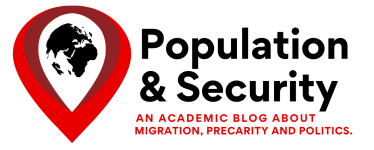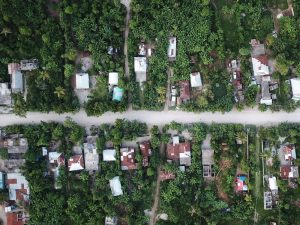“They’ll come in by the thousands, maybe even millions, and Canada better be ready for it.” These aren’t the words of a Canadian official, but they could soon be the reality if Donald Trump’s plan to deport 12 million undocumented immigrants take shape. As history has shown, a shift in U.S. immigration policy sends ripples far beyond its borders. During Trump’s first presidency, Canada experienced a surge in irregular migration, highlighting weaknesses in its asylum infrastructure and policies like the Safe Third Country Agreement (STCA). While Canada prides itself on its humanitarian values, it now faces a critical test of those principles in the face of a potential new wave of asylum seekers. Can Canada rise to the challenge?
The STCA is a bilateral treaty between Canada and the United States signed in 2004. It is based on the principle that refugees must claim asylum in the first safe country they arrive in. This means that individuals entering the United States are barred from seeking asylum at official Canadian border crossings, and vice versa. While the agreement has helped streamline asylum claims and reduce administrative duplication, it has a very significant flaw; it applies only to claims made at official ports of entry. Migrants crossing the border irregularly—through unofficial routes—can still make asylum claims once inside Canada.
This loophole became a lifeline for thousands of migrants during Trump’s first presidency. Unable to claim asylum at official crossings, many turned to informal routes such as Roxham Road in Quebec. Though these irregular crossings are unauthorized they are in fact not illegal, and Canadian authorities are required to process asylum claims for anyone who reaches Canadian soil. This paradox led to a surge in irregular crossings and sparked a nationwide debate over the fairness and efficacy of the STCA. This loophole has since been partially closed through amendments to the STCA in 2023, which extended the agreement’s provisions to all border crossings, including unofficial ones. These changes aim to deter irregular migration, however critics could argue that it risks denying protection to vulnerable individuals fleeing persecution in the United States.
Looking back to 2017 and Trump’s 1st Presidency
During Trump’s first term (2017-2021), his administration’s aggressive immigration policies caused a sharp increase in asylum seekers heading north to Canada. Executive orders restricting asylum rights, deporting undocumented immigrants, and separating families at the southern U.S. border created an environment of fear and uncertainty for millions. By 2017 over 20,000 asylum seekers crossed into Canada irregularly, with most using infamous Roxham Road as their entry point.
The migration wave exposed significant vulnerabilities in Canada’s immigration system. Shelters in Quebec quickly reached capacity, forcing authorities to convert community centers, stadiums, and hotels into temporary housing. Immigration tribunals faced severe backlogs, with some claimants waiting years for their cases to be heard. The strain on social services fueled debates about the limits of Canada’s capacity to absorb new arrivals. Public opinion was sharply divided. While many Canadians viewed the influx as an opportunity to uphold Canada’s humanitarian reputation, others expressed concerns about border security and resource allocation.
Canada Gets Prepared: Helicopters, Drones and Border Security
So here we are in 2025, and Trump is once again president. Trump has already appointed Tom Homan his “Border Czar” to execute Trump’s deportation plans. In anticipation of this migration crisis, the Canadian government recently announced plans to purchase additional helicopters and drones to bolster border security. The RCMP has already increased patrols on the southern border in an attempt to appease Donald Trump. This investment is intended to monitor and secure remote border areas more effectively, particularly along high-traffic corridors like the Quebec-New York border. The drones will feature advanced surveillance capabilities, allowing authorities to detect unauthorized crossings in real time. Helicopters will provide rapid-response support to border officials and assist with emergency situations, such as rescuing migrants facing extreme weather conditions. While these tools are crucial for improving border integrity, they also highlight the complexity of this situation: balancing security with humanitarian obligations.
Government Reaction and Attempts at Diplomacy
Foreign Affairs Minister Mélanie Joly has reaffirmed Canada’s commitment to humanitarian principles while emphasizing the importance of maintaining border security. Joly has stated that Canada will uphold its international obligations and ensure that those seeking refuge receive fair judgement. She has also reassured Canadians that the government is working on strategies to prevent an unmanageable influx while still providing protection to those in need while maintaining the public’s confidence in the system.
Foreign Affairs Minister Mélanie Joly has taken a diplomatic approach, highlighting the need for close cooperation with the United States. Joly has stressed the importance of dialogue with U.S. officials to ensure that Canada is prepared for potential policy shifts. She has also reiterated that while security measures are being enhanced, Canada must remain a welcoming and compassionate nation. Her focus has been on maintaining strong bilateral relations while advocating for a migration policy that balances enforcement with human rights. Joly has made significant efforts to encourage cooperation and lessen retaliation against Canada. Joly is traveling to the U.S. to meet with Secretary of State Marco Rubio to ensure continuing cooperation between the nations.
How Else Can Canada Prepare for the Surge?
First, reforming the Safe Third Country Agreement is essential. While the 2023 amendments addressed irregular crossings, critics have pointed out that these changes could further marginalize vulnerable migrants. A more balanced approach would allow asylum claims at official border crossings, reducing reliance on informal routes.
Second, Canada must invest in infrastructure to accommodate potential new arrivals. Shelters, housing, and temporary facilities near key entry points must be expanded to prevent overcrowding. The federal government should also allocate resources to reduce legal backlogs and ensure that asylum claims are processed efficiently. Social services are also critical for helping migrants that are admitted to integrate and contribute to Canadian society.
Conclusion
Ultimately, Canada’s response to Trump’s deportation wave will test the country’s ability to balance its values with its responsibilities. Once again reassessing the Safe Third Country Agreement, enhancing border security, and investing in social infrastructure are all essential steps along the way. As history shows, Canada has the capacity to adapt to these challenges, but only with a forward-thinking approach that prioritizes both compassion and pragmatism.
After all, as the old saying goes, “When life hands you lemons, make lemonade”—and when borders bring challenges, Canada can turn them into opportunities to reaffirm its commitment to justice, humanity, and hope.






2 comments
Great article Jenna; very informative and of course timely with current conditions in U.S today!
I enjoyed reading your article Jenna. With the ever shifting political landscape south of our borders it is imperative that we know where we stand as Canadians and work diligently to ensure that other non Canadians do as well..
Rosalie